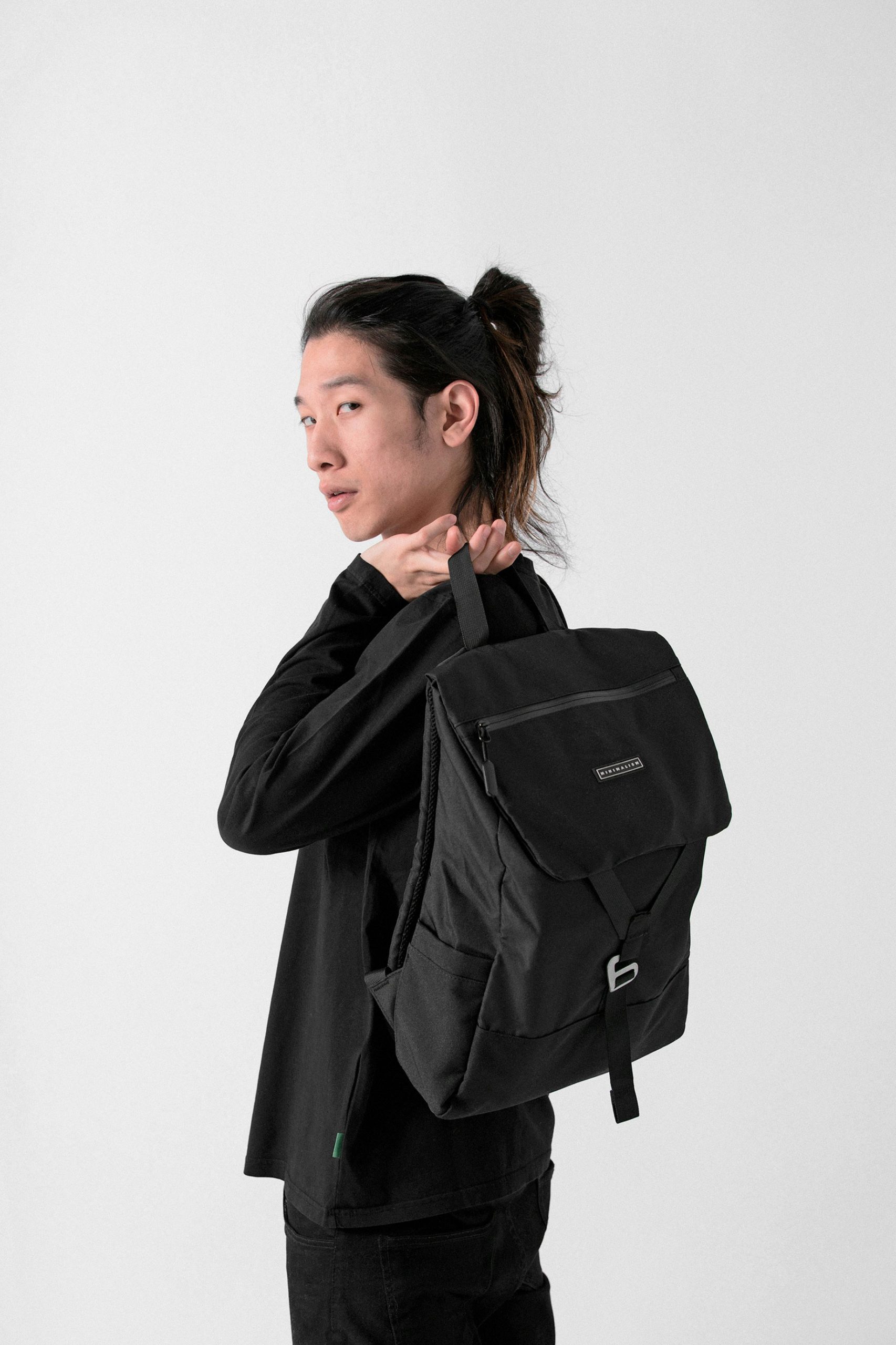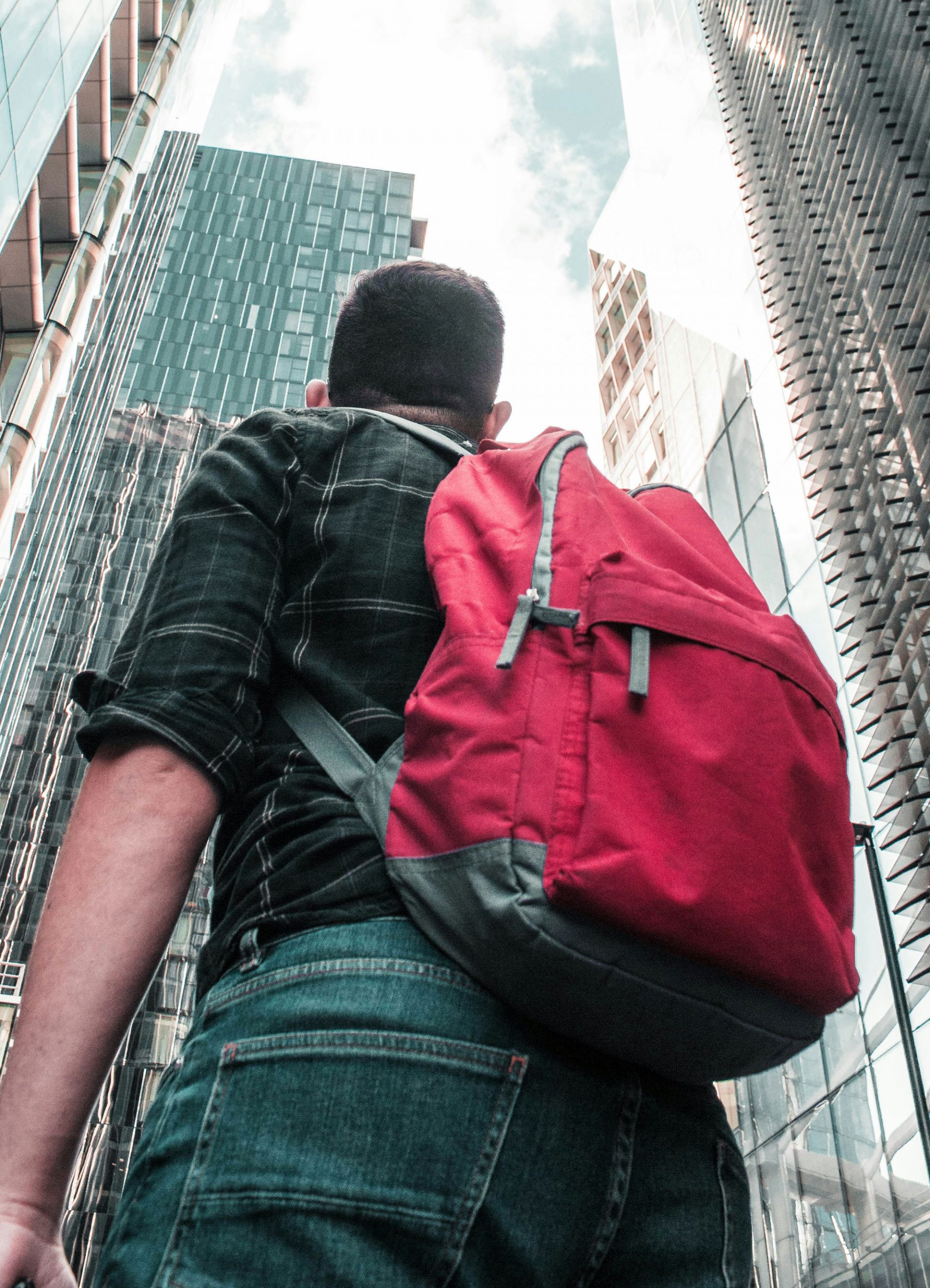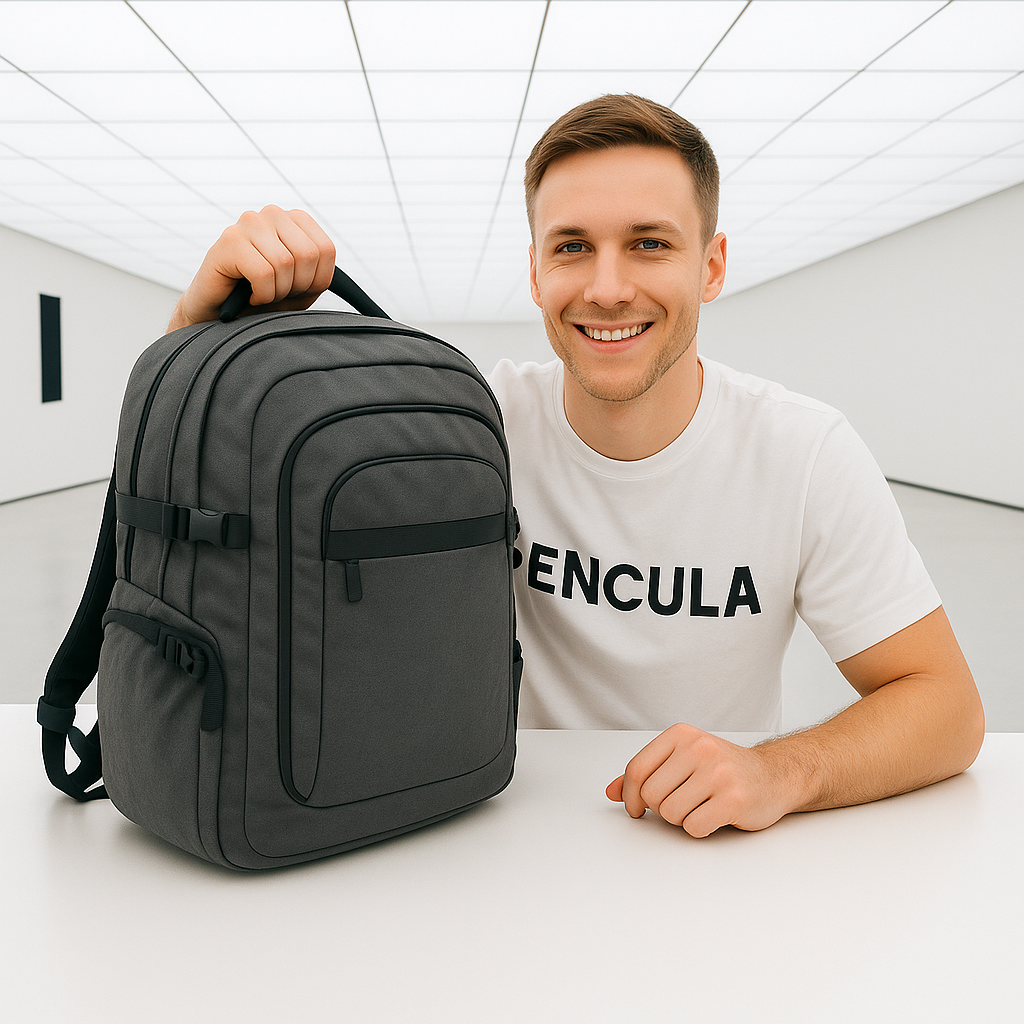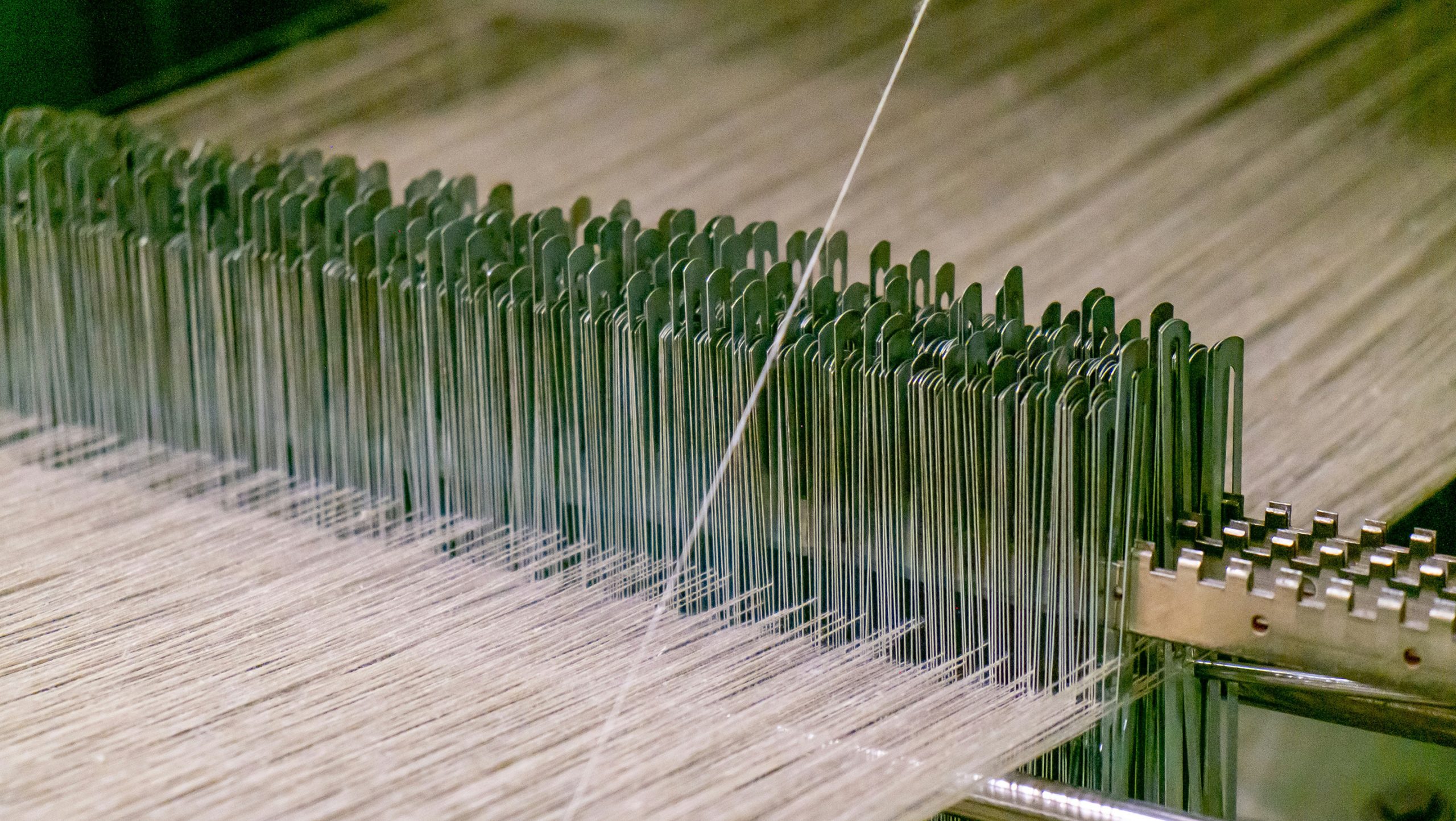When it comes to backpacks, there are two main ways of thinking. Some people like them simple, with only what you need and a look that lasts. Others want lots of space, pockets, and cool features. Which way is better? It’s not always clear, and it depends on what you want.
Why Simple is Cool
Simple backpacks follow the idea that things should just work without being showy. Like Leonardo da Vinci said, Simplicity is the ultimate sophistication.
What’s a Simple Backpack?
A simple backpack has a main space, maybe a spot for your laptop, and not many pockets on the outside. Think of backpacks like the Fjällräven Kånken or Herschel Little America. They haven’t changed much over the years because they do the job well.
Here’s what makes them simple:
- Clean and smooth look
- Not many outside pockets or zippers
- Basic stuff like canvas or nylon
- Colors that always look good (black, blue, gray, etc.)
- Easy to understand how things are stored
Why People Like Simple Backpacks
There’s something nice about a backpack that’s not too complicated. It means you’re trying to keep things easy and not carry too much stuff. Simple backpacks are good for:
- Busy people who don’t want to spend time deciding which pocket to use
- Travelers who want to pack light
- People who care about style and want something that won’t look old fast
- People on a budget who want something good without spending too much
Why Complex Can Be Good
Complex backpacks have lots of pockets and special features to make your day easier. They’re made for people who have a lot to carry and want to keep it all organized.
What’s a Complex Backpack?
Complex backpacks have lots of spaces, special pockets, and are often made with strong materials. Think of backpacks like the Peak Design Everyday Backpack, Nomatic Travel Pack, or Bellroy Transit Backpack.
Here’s what makes them complex:
- Lots of spaces for different things
- Ways to keep things in place (like straps or dividers)
- Strong materials (like waterproof fabric and strong zippers)
- Special things like laptop protection and spots for cables
- Can change to fit what you need (like getting bigger or smaller)
When Complex Makes Sense
Complex backpacks aren’t just about having more stuff. They’re about having the right stuff for what you need. If you’re a photographer, you might want a quick way to get to your camera. If you work online, you might want a spot for all your cables. Complex backpacks are great when:
- You have special gear (like cameras, laptops, or things that break easily)
- You travel a lot and need to keep things organized
- You do different things every day (like going to the gym, working, and going out)
- You want to be quick and know where everything is
Simple in Action: When Less is More
The Student
Sarah, a student, likes her simple backpack. I just need space for my laptop, some books, and my water bottle, she says. All those extra pockets just make things get lost. I know where everything is because there aren’t many places to put it.
Her simple backpack makes her think about what she really needs. Because she doesn’t have a lot of pockets, she carries less, which is better for her back.
The Designer
Mark, a designer, likes his simple leather backpack because it looks good. When you’re meeting clients, your bag is part of how people see you, he says. A clean, simple bag shows that you’re clear and pay attention to details, which is what clients want.
His simple backpack works for meetings, coffee shops, and weekends, showing that you don’t need a lot of stuff to be ready for anything.
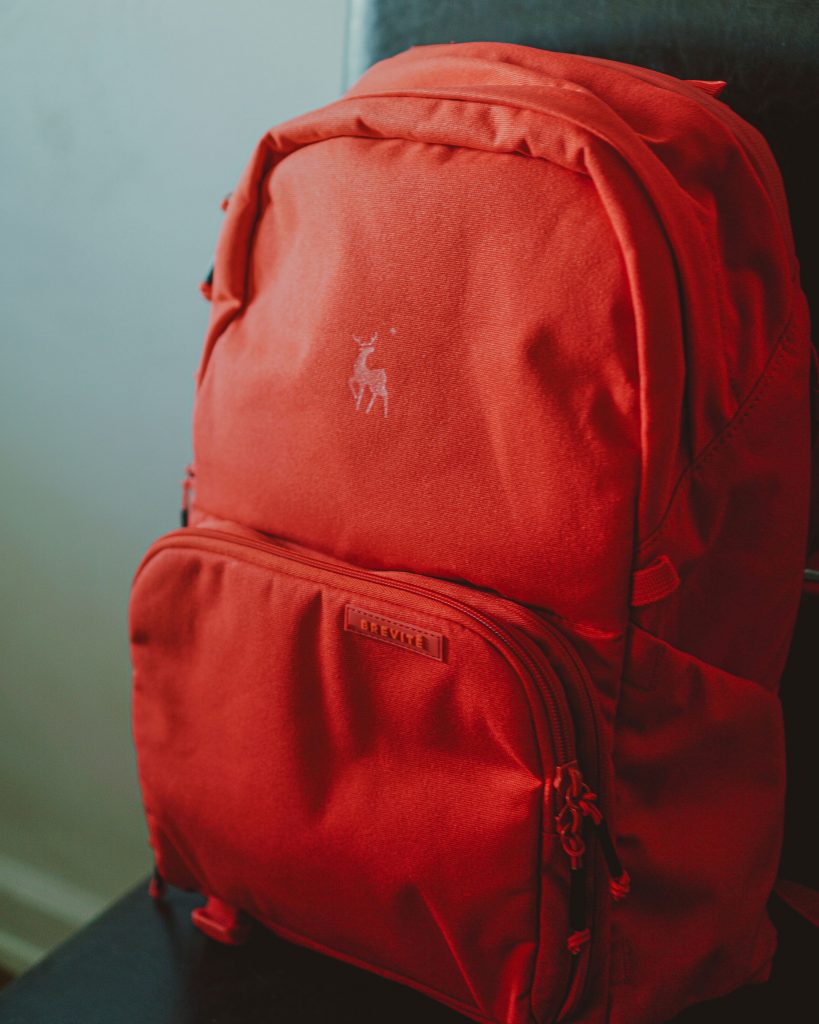
Complex in Action: When More is Better
The Startup Founder
Lisa runs a startup, and her Peak Design backpack is like her office on the go. I need my laptop, iPad, chargers, cables, business cards, and personal stuff all organized, she says. The special spaces mean I can find anything fast, even when I’m traveling.
Her complex backpack helps her stay organized, so she doesn’t have to think too much about packing and unpacking.
The Photographer
James takes travel photos, and his camera backpack is a must-have. I need to get to my lenses fast, protect my batteries from the weather, and keep everything organized so I can work fast, he says. A simple backpack would mean I’d have to dig around for stuff or carry multiple bags.
His complex backpack is for a job where being simple would actually make things harder.
What You Gain and Lose With Each
Simple Backpacks
What’s good:
- Always looks good
- Costs less because there’s less to make
- Lasts longer because there are fewer things that can break
- Works for many things
- Easy to clean
What’s not:
- Not much space for special gear
- Not much protection from the weather
- Hard to get to things fast
- Can’t change it to fit different needs
- Not good for jobs that need special features
Complex Backpacks
What’s good:
- Special spaces for different needs
- Good for work because of the features
- Can change to fit what you need
- Protection from weather and damage
- Fast to pack and get things
What’s not:
- Not simple – more things to think about
- Can look old fast
- Costs more
- Might not fit in everywhere
- Harder to clean
Finding the Middle Ground
The best backpacks are often in the middle. They have some extra features, but still look simple.
Examples:
- Bellroy Classic Backpack: Looks simple, but protects your laptop and has good organization
- Patagonia Refugio: Looks clean, but has features for being outdoors
- Everlane ReNew Transit: Looks simple, but is good for commuting
What Materials Say About the Design
Simple Backpack Materials
Simple backpacks often use materials that look better over time:
- Canvas: Strong, can be fixed, looks better as it gets older
- Leather: Feels good, looks better with age
- Basic nylon: Works well, cheap, easy to replace
Complex Backpack Materials
Complex backpacks usually use stronger materials to support the features:
- Ripstop nylon: Light but strong for travel
- Waterproof fabrics: Keeps things dry
- Technical meshes: Lets air in and keeps things organized
- Mix of materials: Uses different materials for different reasons
How We Decide: Simple or Complex
The choice between simple and complex often depends on how we want to make decisions. Simple backpacks make it easy – you just put things in the main space. Complex backpacks can help you decide where to put everything, but they can also be too much.
It’s like having too many choices:
- Not enough choices can feel bad
- Too many choices can be overwhelming
- The right amount is different for everyone
Taking Care of Your Backpack
Simple Backpack Care
Simple backpacks are usually easier to take care of:
- Fewer zippers to break
- Easier to fix
- Basic materials are easier to repair
- Don’t need special cleaning
Complex Backpack Care
Complex backpacks need more care:
- Zippers and other parts need attention
- Strong materials might need special cleaning
- Might need special parts to fix
- Important to get a good one to start with
How to Choose: Questions to Ask
When choosing a backpack, think about these things:
What You Need
- What do you carry every day?
- How often do you change what you carry?
- Do you need space for special gear?
- How fast do you need to get to things?
Your Life
- What do you need for work?
- How often do you travel?
- What activities do you do (work, gym, travel, fun)?
- Where will you keep and clean your bag?
What You Like
- Do you want fewer or more choices?
- How important is it for your bag to look good?
- How easy is it for you to learn new things?
- How much work do you want to put into taking care of your bag?
What’s Next for Backpacks
Backpack design seems to be going toward invisible complexity. This means backpacks look simple, but have cool features inside. They might use smart materials, technology, or ways to change the inside without making the outside look busy.
Things to look for:
- Ways to change the inside
- Materials that change on their own
- Technology that doesn’t take up space
- Features that don’t hurt the environment
In Conclusion: You Can’t Go Wrong
There’s no best choice when it comes to simple or complex backpacks. It’s about finding what fits your needs and what you like. The best backpack is the one that makes your life easier.
Choose simple if you:
- Like things that always look good
- Want things to be easy and last
- Don’t want to think too much about choices or cleaning
- Carry the same things most of the time
Choose complex if you:
- Need special spaces for things
- Change what you carry often
- Want to get to things fast
- Like new features that make your work better
Consider something in between if you:
- Want some extra space, but not too much
- Need special features, but want them to be simple
- Want a bag that will last and change with you
- Like designs that can grow with your needs
The most important thing is to find a backpack that you like using. Whether it’s a simple canvas bag or a high-tech pack, the right choice is the one that makes your day better.
There are lots of great backpacks out there, so just be honest about what you need and what you like.
Ready to find the perfect backpack?
Check Out Simple Backpacks:
Check Out Complex Backpacks:
Check Out Middle-Ground Backpacks:
#BackpackDesign #SimpleVsComplex #MinimalistDesign #FunctionalDesign #BackpackGuide #DesignPhilosophy #EDCGear #BackpackReview #TravelGear #UrbanBackpack #DesignDecisions #BackpackLife #GearReview #FunctionalFashion #DesignThinking #BackpackTrends #CarryGear #BagDesign #ProductDesign #UserExperience #DesignChoices #Pencula #BackpackCommunity #GearGuide #DesignDebate
